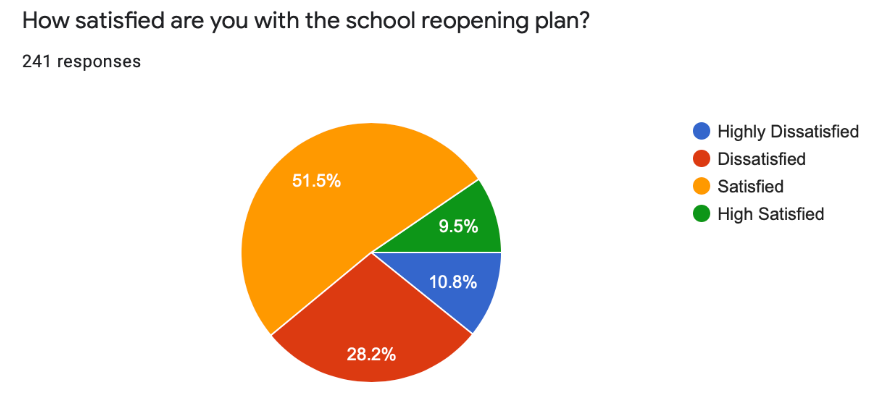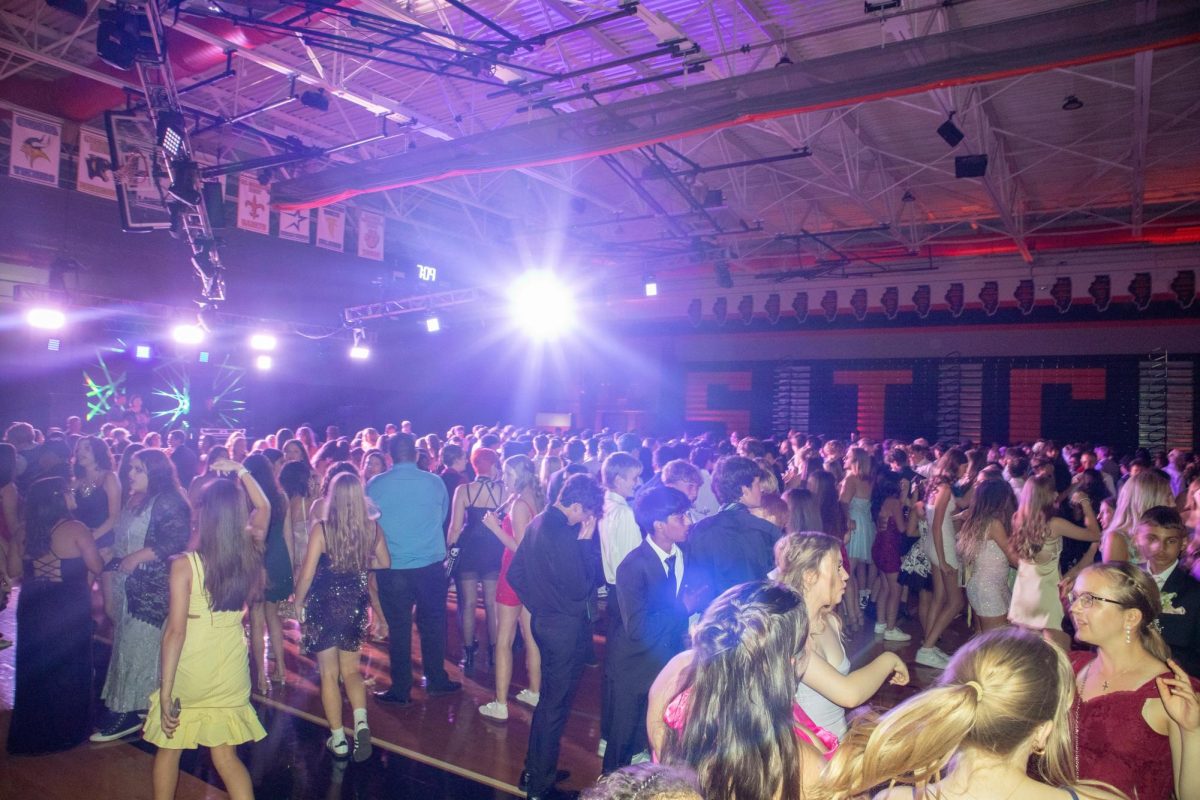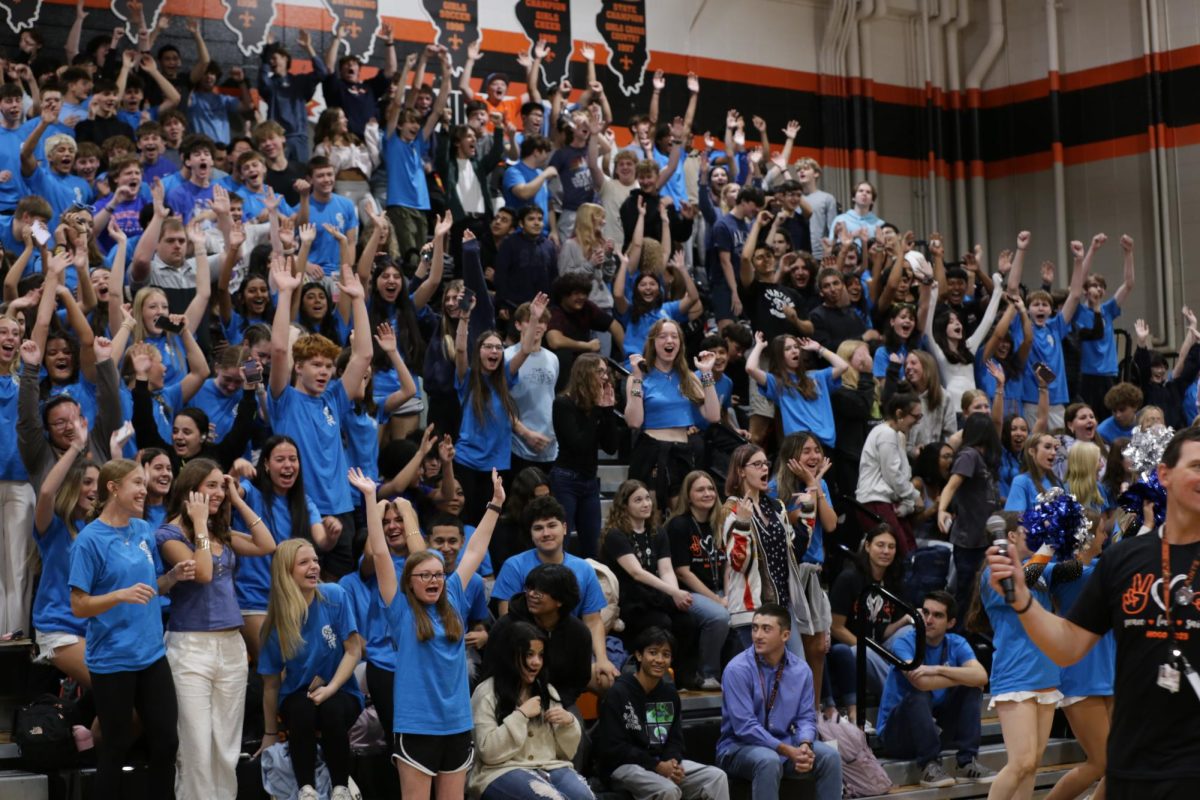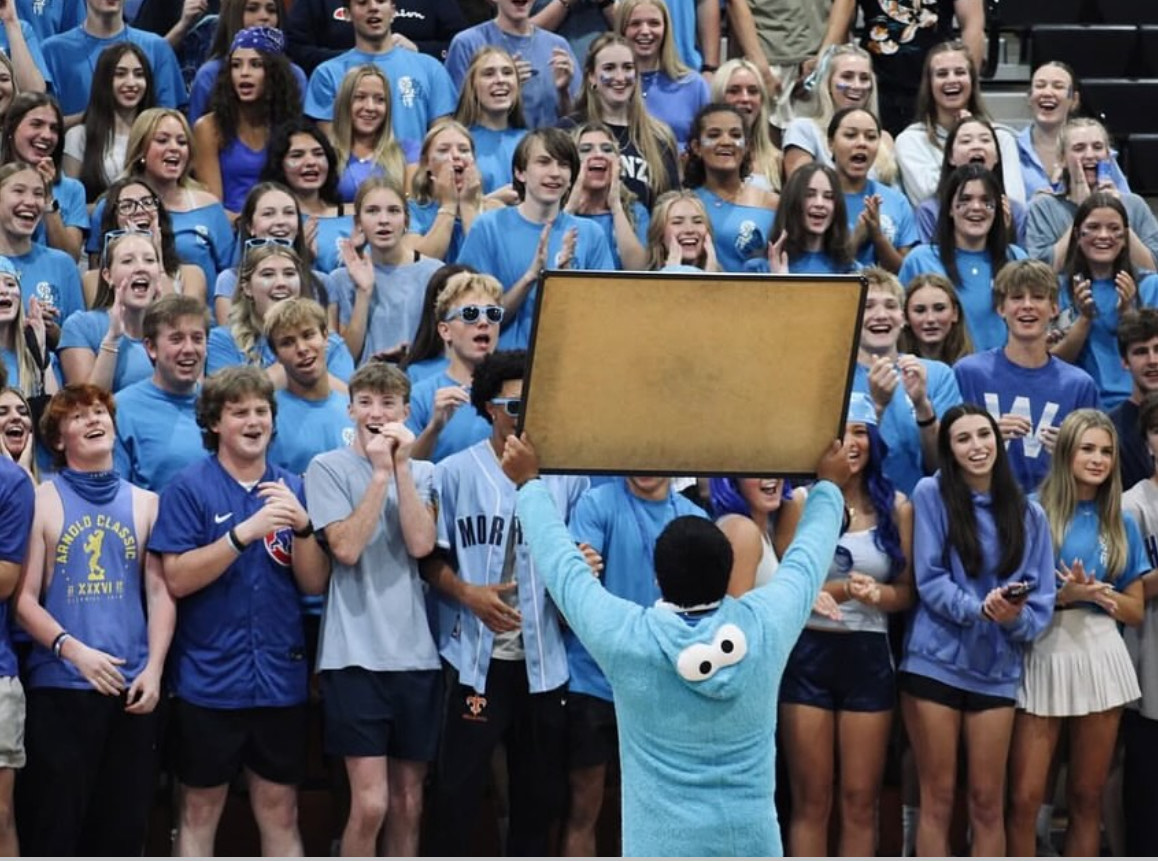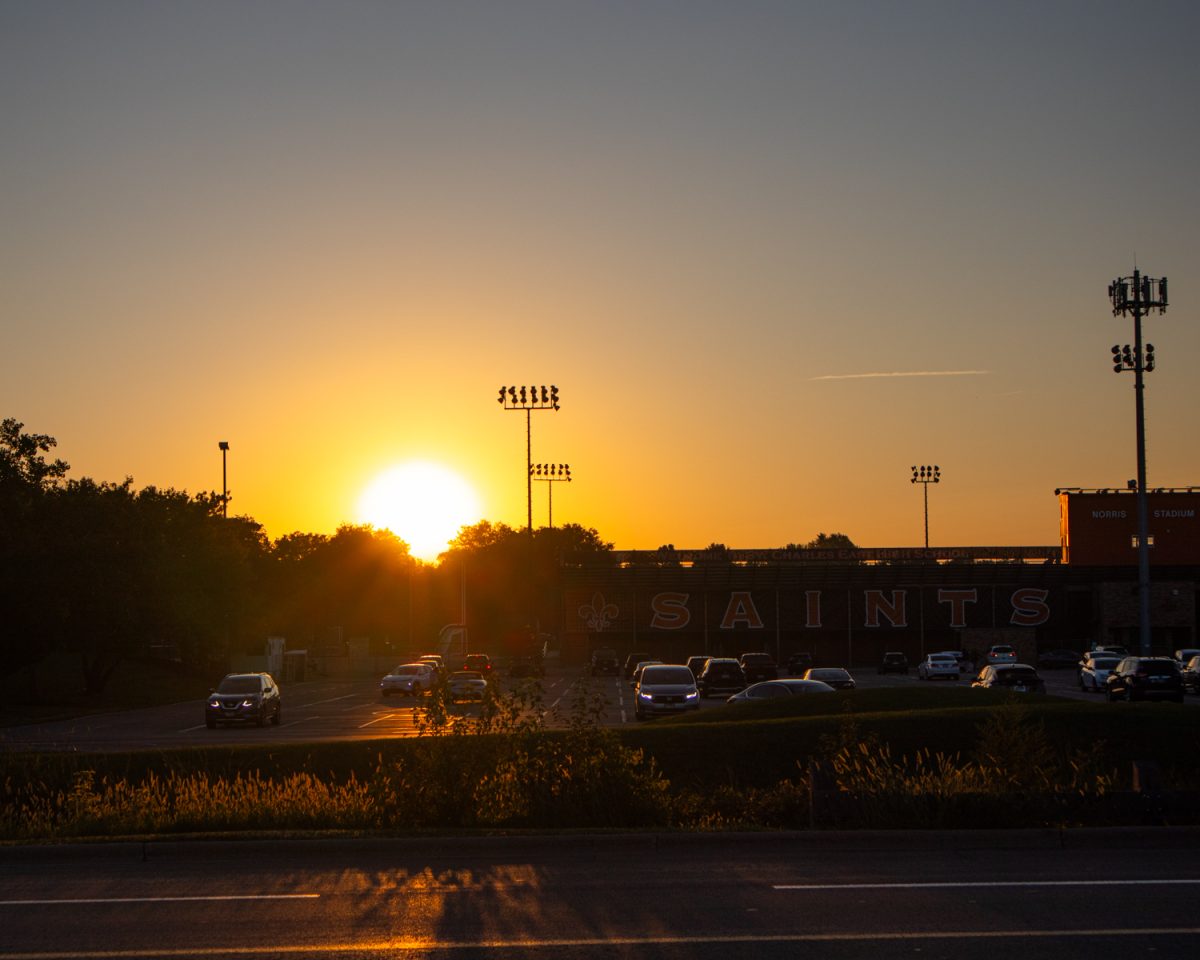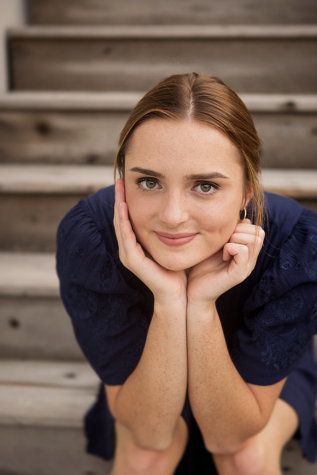D303 announced on August 10 that its high schools would be adopting a fully-remote instructional model at least through the first quarter of the 2020-21 school year in response to the ongoing COVID-19 pandemic.
This news came amid rising controversy over D303’s previous plan to use a hybrid model at the high school level for the upcoming fall semester. Until the recent change, East was slated to be one of just a few schools in the Chicagoland area that would use in-person instruction at all this fall.
The District cited rising numbers of COVID-19 cases, along with reports from schools that have reopened and found in-person learning to be unsafe, as the reasons for the revision.
“We want to make sure that when we do open our doors, every precaution has been taken to protect the health of our students and staff members,” said superintendent Dr. Jason Pearson in the new plan.
“At this time, we feel that the safest option for in-person learning is to slowly bring in-person students and staff members back using a staggered phase-in approach that will begin on August 19.”
The plan can be read in full on the D303 website.
For now, that means that students can expect to attend their lessons from the comfort of their own homes using Zoom or Google Meet. A new synchronous E-Learning schedule has been unveiled that will dramatically increase the instructional time from the previous spring 2020 model.
According to this schedule, students will attend remote lessons from 8:30 AM to 2:30 PM Monday through Friday. On Mondays students will attend all 8 of their classes for 30 minutes each (interspaced with 10-minute breaks). The remaining days of the week are split between odd (Tues./Thurs.) and even (Weds./Fri.) days where students will attend either only odd or even-numbered periods for 75-minute sessions (with a 15-minute break in between classes).
The District has said it will consider allowing small groups into its high schools beginning September 9 if they are enrolled in courses that require special materials that cannot be accessed at home (i.e. science labs, etc.).
All of these changes beg one question: “How did we even get here?” Looking through the resources on the District’s website, it can be easy to get confused by contradicting and outdated information. We thought we’d give you a rundown of everything D303 has been doing to prepare for this fall semester, with the hope it sheds some light on their recent decisions.
A Plan to Reopen Schools
Back in June, the District brought together a group of administrators, teachers and students to form the D303 Reopen Task Force. The group was divided into 7 separate committees (examples include the “Building Health & Safety Committee” and the “Instruction Committee”). Each committee was tasked with developing a specific part of a plan that would allow students to safely resume their learning in the fall.
That plan would have to abide by standards set by the Illinois State Board of Education (ISBE) and the Illinois Department of Public Health (IDPH). By the time the Task Force convened, the state had entered Phase 4 of the IDPH’s Restore Illinois Plan. Phase 4 allows for groups of up to 50 people, so long as they wear masks and stay 6 feet apart. The ISBE encouraged the use of in-person instruction so long as there were alternatives for students with elevated health-risks and a plan in place to return to fully remote instruction should there be a resurgence in COVID-19 cases.
The Task Force worked together over Zoom to develop procedures and protocols that they felt would keep students safe when they returned to school. After approval from the D303 Board of Education, they presented their plan to the public for the first time on July 13.
East and North students were given a choice between two instructional models.
The first was a hybrid model in which students would alternate between in-person and remote instruction according to a schedule based on their last names. The idea was that splitting the student body into alternating “A” and “B” groups would keep the school at 50% of its capacity and allow for social distancing and other safety measures to be maintained.
In keeping with the ISBE’s regulations, students would have to verify they were free of any COVID-19 symptoms before coming to school by answering an online questionnaire. Inside the school, social distancing would be maintained and high touch surfaces would be cleaned with increased frequency.
The second option was a fully remote model, similar to the one used at the end of the 2019-20 school year. Reportedly, however, the new plan had major improvements. Students were to be assigned to special teachers dedicated solely to teaching remotely for the fall semester and more opportunities for synchronous learning were to be provided than before.
D303 affirmed in their original plan that both models “prioritize safety and are designed to provide consistency in instruction and learning… [and] students in both settings will receive a meaningful educational experience focused on their academic knowledge, skills, and competencies.”
Students Respond
The announcement of the original plan was met with mixed emotions. An August 6 survey of 240 East students found that while a majority of respondents (60.8%) were either satisfied or highly satisfied with the Reopen Plan, a significant minority of them (39.2%) were dissatisfied or highly dissatisfied.
Supporters of the plan praised the District for its decision to offer in-person instruction and the comprehensive safety measures that would be implemented. They affirmed that full remote learning was undesirable, and felt the protocols in place would reduce the risk of exposure to COVID-19 to a tolerable level.
Senior Emily Quid, one of the student representatives on the Reopen Task Force, said the following of the plan before its revision: “It was very clear… that having students in school is much more beneficial for their education, as well as their social emotional well-being. It’s easier for students to receive direct feedback from a teacher when in school [and] easier on working parents.”
Bilal Karim, another senior who served on the Task Force, affirmed that everyone on his committee was very much pro-hybrid learning. “We were all very dedicated and focused on having students return to school in the fall,” he said.
Others did not have such glowing reviews of D303’s plan. Opponents assailed the Task Force for an apparent lack of care and compassion for those more susceptible to COVID-19, and cited worries about students not following safety guidelines and asymptomatic transmission. They argued that the District was misleading people with false reassurances and predicted a quick shutdown of schools after reopening due to a spike in cases. Many of them made it clear a fully remote model should have been chosen.
“Many people aren’t taking this as seriously as they should, and considering how contagious this disease is, our school could become a hot spot very quickly,” said junior Nina Brewer.
“If you can’t keep an ID on a student, how do you expect to keep a mask on them?” she quipped.
Senior Madison Bandur was among those who chose to pursue full remote learning instead of the hybrid model. Her decision was reinforced when she saw that students and deans at Freshmen Orientation were not observing proper social distancing while dropping her younger sister off.
“My sister explained to me that [Orientation] felt like a normal day at school but with masks… I shouldn’t have to fear for my life while at school and I feel the only option to avoid that is E-Learning.”
Emma Santos, also a senior, had similar fears to Bandur, but instead felt she was forced into choosing the hybrid option. “I chose the hybrid model because I did not feel the options would be equal academically,” she said.
Santos feared she would not receive quality instruction in her 5 AP classes online if they were taught by newly hired teachers specifically brought in for the pandemic. Without any clear reassurances from D303 that this wouldn’t be the case, she didn’t have any other option than to risk possible exposure in the hybrid model.
“If I had control over the plan, honestly, I wouldn’t even have the option to go back. The attitude seems like the District knows it’s going to get shut down, [and] they just want to send us back to be able to say ‘oh well, we tried,’” she said.
Administrators did not seem to have these same worries. Juanita Gyfrinksi, D303’s Lead School Nurse Coordinator, said that she was “confident our students will follow the guidelines and requirements that are in place for all mitigation strategies.” She emphasized that the District’s goal was to slow the spread of the virus, and that the recent rise in cases among adolescents reflected increasing testing capacity.
A Later Start Date
D303 announced in a letter home on July 30 that the start date of school would be pushed back one week from August 13 to August 19 in order to “further prepare our facilities with the needed protective measures and cleaning protocols.”
Although the letter did not make any mention of alterations to the logistics of the plan itself, it did seem to indicate that D303 wasn’t ready to implement their dual models of learning.
A New Plan
On August 10, the District announced it had made significant revisions to its original Reopen Plan in yet another letter home. Chief among them was the elimination of the hybrid model at the high school level. All East and North students would now be attending their lessons remotely until the end of the first quarter according to the guidelines discussed above.
Students Respond to the New Plan
The announcement of a new plan just a week before school was slated to begin came as a surprise to some students and parents, and was once again met with mixed feelings.
“I’m relieved they have decided to go fully online at the high school level. I definitely think it’s the safest option,” said Santos. “Now it is up to the community to react responsibly.”
Others, like Karim, could tell a change was coming from a long way off. Although he wasn’t personally involved in this latest decision, he said he could tell “something was in the works. It still would have been a very difficult task to have 1,200 students return (50% capacity).”
Of course, this new plan does not come without its own concerns. Many students remain skeptical about the supposed improvements that have been made to the spring 2020 E-Learning model–a system that one survey respondent went so far as to call “flagrantly ineffective.” Others have likewise stated their previous E-Learning felt “optional” and that the grades they earned during it “weren’t worth anything.”
D303, on the other hand, has repeatedly affirmed that its revised full remote plan is “comprehensive” and will help students build core academic competencies.
Looking Ahead
There are also question marks about if and when students will return to in-person instruction under a normal schedule. Unlike many other surrounding school districts, D303 does not yet have a definitive plan for the second quarter of this year. While this does leave the door open for a return to normalcy by October, some students aren’t that optimistic.
“I think it will be a while before we return back to school even part-time,” said Karim. “My assumption is we’ll return around early November, but once winter hits, we’ll be remote again.”
Only time will tell whether this prognosis will hold true. For now, it seems like students can expect a whole lot of Zooming in the near future.


